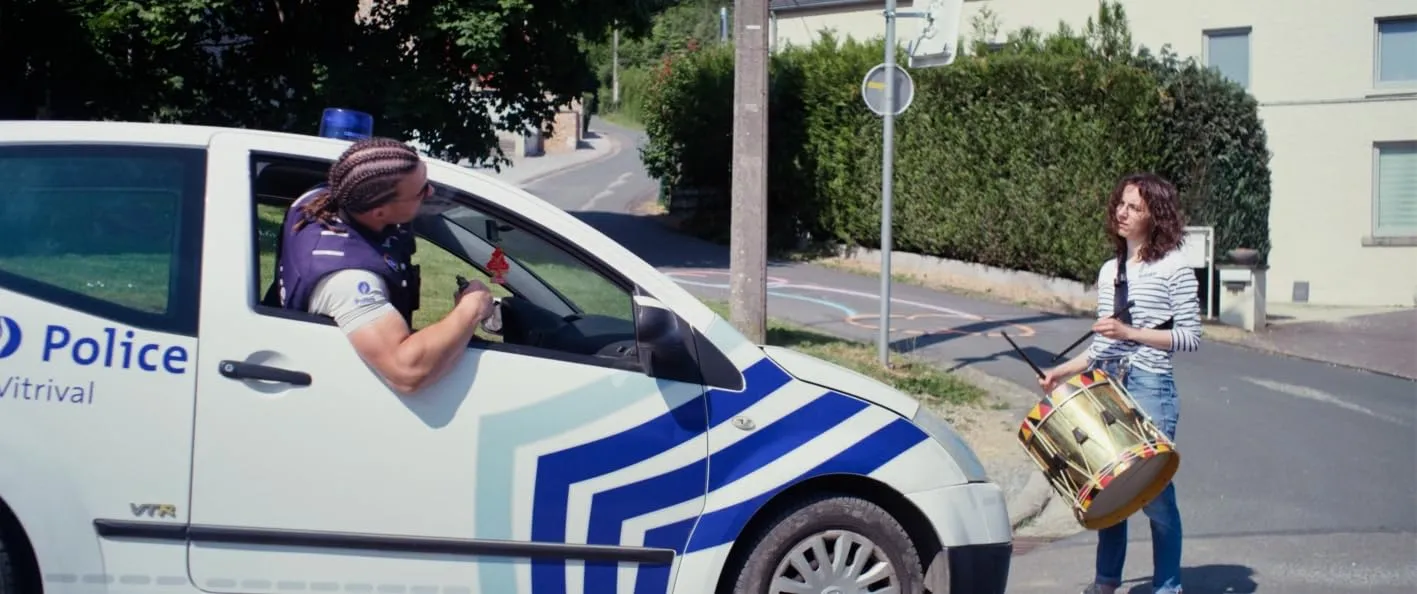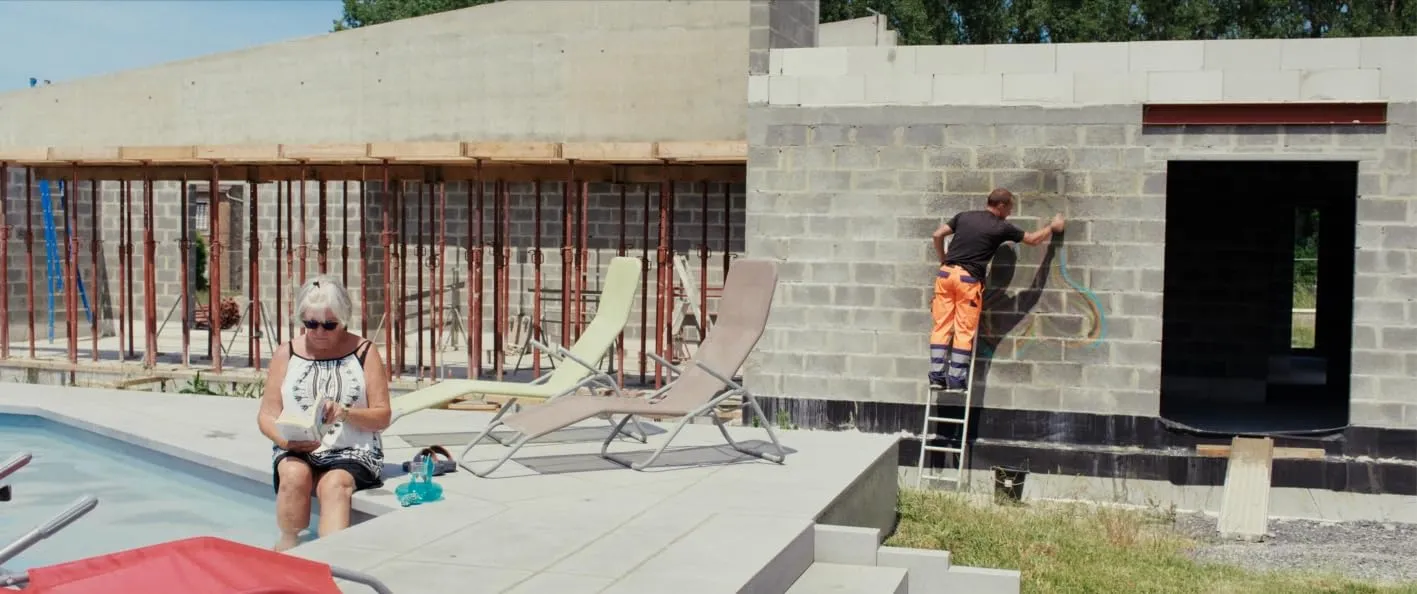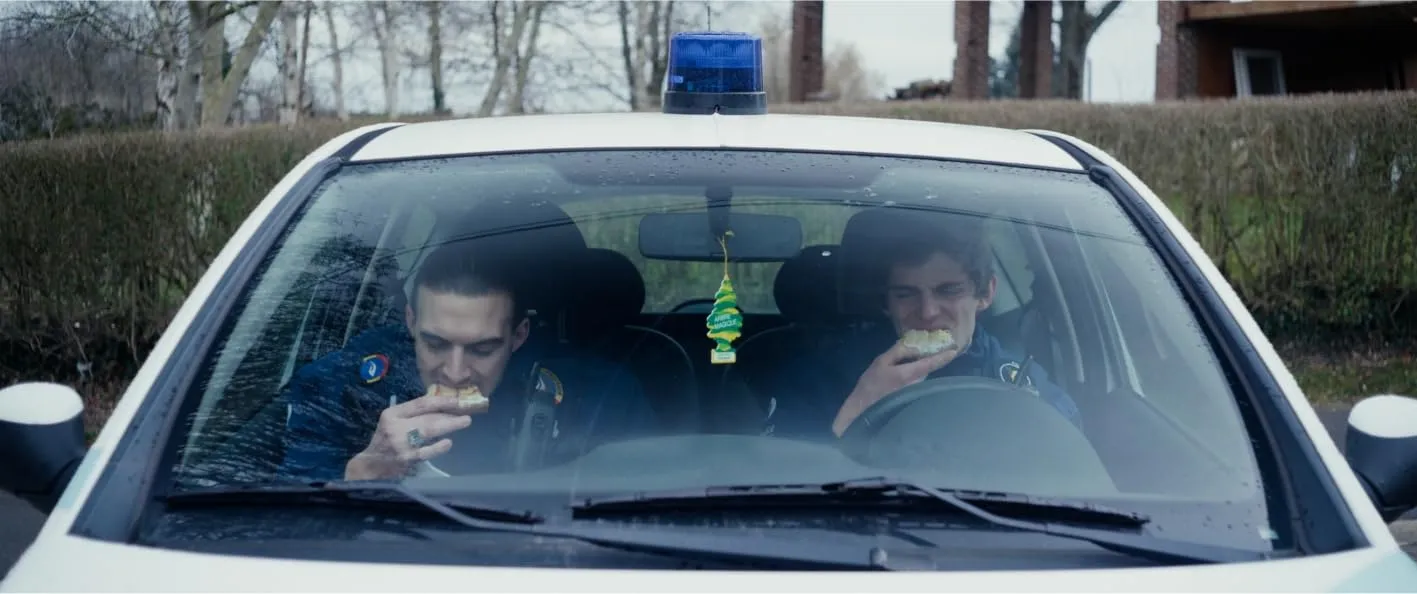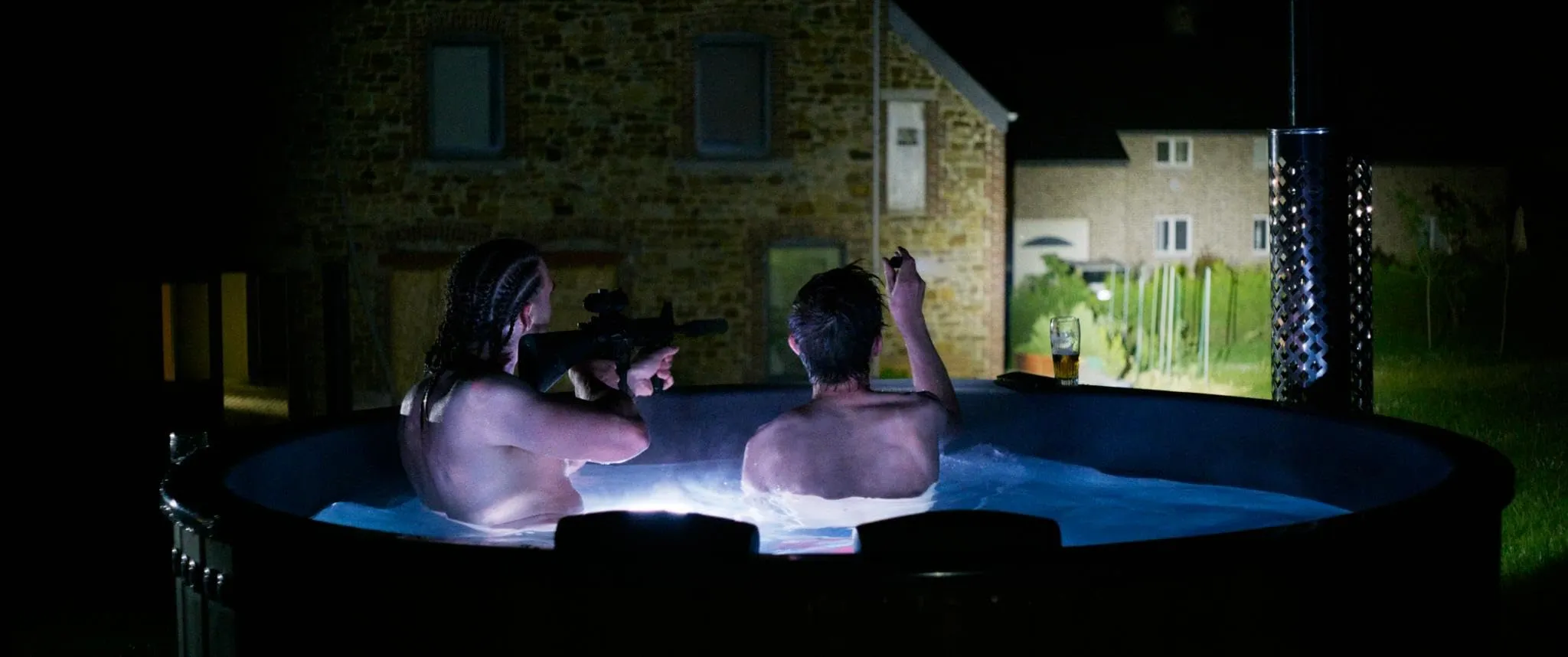“Vitrival – The Most Beautiful Village In The World” marks the feature debut of directors Noëlle Bastin and Baptiste Bogaert, a work that unfolds within a deceptively tranquil rural setting in francophone Belgium. Here, the viewer is introduced to a town where the everyday reality of community life is suddenly disrupted by two perplexing phenomena: enigmatic graffiti and a series of self-inflicted tragedies. The film establishes its narrative framework by examining the intricacies of a close-knit population as they struggle with internal pressures and unforeseen chaos.
The narrative unfolds at a measured pace, closely tracking the lives of local municipal officers as they confront these disturbances with a measured mix of humor and sorrow. Throughout the opening scenes, there is a careful orchestration of mundane routines against an undercurrent of unease that hints at deeper issues.
The atmospheric rendering of the village—its modest routines, its intimate communal connections, and the unanticipated emergencies—invites the audience to witness a story that is both gentle and unsparing in its attention to human frailty. This introductory segment sets the stage for a narrative that carefully scrutinizes the interplay between personal duty and communal disintegration.
Threading the Narrative: A Study in Structure and Subtlety
The film organizes its tale by letting time mark its progress. The pace moves along with the changing seasons, where local festivities like the Grand Feu, the Marche Royale Saint-Pierre, and All Saints punctuate shifts in the community’s rhythm. These events serve as natural markers, signaling shifts that mirror the quiet wear of daily life against sudden emotional shocks. The progression through the calendar invites viewers to experience a slow drifting of hope and despair as the village grapples with emerging crises.
Parallel to these seasonal markers is the storyline of two municipal officers. Their mission unfolds in stages as they investigate a recurring series of provocative graffiti and a troubling rise in self-inflicted tragedies. Episodes of routine patrol and community engagement are interrupted by moments of unexpected disturbance, giving the narrative a segmented yet cohesive feel. This approach brings a steady cadence to the unfolding drama, as each new incident builds upon the last without rushing through the complexities of the village’s challenges.
A key strength lies in the film’s dialogue and interaction. Scenes capture the unguarded chatter and subtle exchanges between neighbors, lending an authenticity that contrasts sharply with the weight of recent events. Occasional dry humor punctuates these exchanges, offering relief even as the story examines serious matters. The understated comic elements emerge in reactions that are matter-of-fact and measured, leaving room for introspection even in tense moments.
The careful control of pace throughout the investigation plays a crucial role. Tension accumulates steadily over several months, with each incident deepening the sense of unease. The film’s calm delivery of escalating disturbances transforms everyday tasks into silent struggles against mounting despair, proving that restraint in storytelling can be as powerful as any overt drama.
Characters in Detail: The Heart of Vitrival
Pierre and Benjamin serve as the film’s emotional anchor. Pierre is portrayed as a man torn by the weight of tradition and personal hope. He upholds longstanding customs in the village while quietly yearning for a different future. His duty, tied by familial connection, often places him in moments of hesitation, caught between the expectations of community loyalty and his inner ambitions.
In contrast, Benjamin exhibits a stoic front that hides moments of reflective sensitivity. His reserved demeanor masks a keen awareness of the mounting pressures that burden both his professional responsibilities and personal life. Their bond is painted in quiet, everyday exchanges: shared patrols, modest discussions over coffee, and even moments of silent understanding during crisis. Such interactions highlight a subtle tension about self-preservation amid a community in distress.
The film gives equal weight to the ensemble cast drawn from the local milieu. A steadfast radio DJ, a local mayor with a dual role as the town’s doctor, and quirky, older residents add depth to the community portrait. These characters, alongside Pierre’s family members, create a setting where every individual is part of the fabric that defines Vitrival. Small personal stories—like Pierre’s long-distance relationship and the thwarted ambitions of a young woman denied her rightful place in the marching band—offer hints of change and the quiet challenges faced by the village.
The decision to use non-professional actors from the community lends a recognizable air to each role. Their restrained performances contribute a natural tone that reinforces the film’s commitment to reflecting real life. This methodical casting and performance style ensures that while the narrative examines serious themes, the characters remain both accessible and realistically flawed.
Themes and Symbolism
The film presents a portrait of a community united by strong familial bonds that nonetheless endures an internal sense of solitude in the wake of unexpected challenges. Daily rituals and communal gatherings tie the residents together, yet these very routines seem to confine them within an unvarying loop.
Familiarity offers comfort in times of crisis, while the inertia of tradition leaves little room for reinvention. The depiction of neighborhood life captures both the solace of close connections and the quiet isolation that stems from an inability to alter established patterns.
A noticeable conflict arises between long-held customs and emerging dilemmas, such as mental health issues and unexplained acts of vandalism. Characters stand by their enduring practices even as modern challenges disrupt their lives. Recurring images—the shifting seasons, age-old festivals, and the mysterious return of graffiti—act as recurring signals of decay and the slim glimmer of renewal. These visual cues mark the persistent struggle between holding fast to the familiar and the subtle, sometimes reluctant, call for transformation.
An increase in self-inflicted tragedies compels the villagers to reassess their ways. The collective response to these losses reveals a community caught between its customary methods of coping and the stark reality of personal grief. Observations of the town’s reaction shed light on the difficulties faced when traditional support systems prove inadequate in the face of personal despair.
Dry humor surfaces amid the heavier themes, offering a momentary reprieve from the unfolding tensions. A wry exchange here or a mildly amusing reaction there brings out a streak of irony in how everyday life continues against a backdrop of sorrow. These brief instances of humor are not mere distractions but reflect a subtle strength in the human spirit, attesting to a resilience that punctuates even the most trying circumstances.
Visual Style, Cinematography, and Sound
The film opts for long, unbroken takes and sparse editing, a decision that effectively anchors viewers in the slowly shifting rhythms of village life. With minimal use of shot-reverse shot, the directors allow scenes to breathe and immerse the audience in the palpable ambiance of Vitrival. This deliberate pacing mirrors the unfolding narrative, where time itself seems to stretch and compress in rhythm with the small-town heartbeat.
Framing is executed with precision using a widescreen format that grants even the most familiar settings a quiet grandeur. Each shot is crafted with care—symmetry and deliberate composition highlight recurring visual elements such as the plain, repetitive scenery of village lanes and communal gatherings. These visual motifs become a language in themselves, quietly emphasizing how the routine and the ritual underlie the fabric of the community.
Sound design reinforces the authenticity of the narrative through an ambient soundscape that incorporates the ordinary sounds of rural life. Local radio broadcasts, the murmur of conversations among neighbors, and the natural cadence of the countryside fill the soundstage, grounding the film in a rich auditory world. The local DJ and frequent radio segments serve as a connecting thread, intertwining the diverse lives of the villagers with a shared medium that is both informative and subtly comforting.
The soundtrack carefully treads the line between melancholy and lightness. Its understated musical cues work in tandem with the visual composition to underscore shifts in mood—a gentle chord accompanying a quiet moment of introspection or a brief, playful tune in a scene of dry humor. In this way, music not only accompanies the narrative but helps articulate the film’s emotional landscape. The recurring appearance of motifs like the ubiquitous graffiti and familiar communal settings adds a layer of visual repetition that, over time, deepens the viewer’s insight into the community’s gradual decline and persistent resilience.
Social Fabric and Institutional Hurdles
“Vitrival” paints a vivid picture of rural Belgian life with a focus on the deep connections that bind its residents. The film vividly portrays community relationships: everyday exchanges on quiet streets, familiar nods among neighbors, and communal gatherings that reveal both the warmth and the weight of shared history.
Regular interactions—whether simple chats at local cafés or small rituals at town meetings—illustrate a delicate balance between comfort and constraint, offering a window into life steeped in long-standing traditions that provide solace in times of trouble.
At the same time, the film lays bare the tension between established customs and present-day challenges. The residents cling to familiar routines that shape their identity, yet these very practices occasionally slow down adaptation in the face of modern issues, such as mental health crises and public disorder. This collision of old habits and new troubles positions Vitrival as a snapshot of a society wrestling with modern pressures while holding on to its heritage.
Local authority figures, including the dual-role mayor/doctor and the dedicated police duo, emerge as key players attempting to manage unfolding events with limited means. Their efforts, though filled with genuine concern, expose systemic shortcomings. Well-intentioned programs—like the distribution of mental health literature—are shown to be insufficient, hinting at the challenges that arise when local governance strains under complex social burdens.
The film itself functions as an artistic reflection on these realities. Its use of naturalistic elements and hybrid storytelling methods opens a subtle dialogue about how art mirrors social healing. By capturing the nuances of daily life, “Vitrival” situates a small village within the larger tapestry of cultural and historical shifts that define francophone Belgium. The interplay between enduring local values and the disruptive pressures of modernity is portrayed as a continuing story of adaptation and quiet resilience.
The Review
Vitrival - The Most Beautiful Village In The World
"Vitrival" is a quietly observant film that captures the subtle rhythms of rural life while interrogating the friction between tradition and modern challenges. Its deliberate pacing, authentic performances, and thoughtful visual storytelling create a reflective portrait of community resilience in the face of societal pressures.
PROS
- Captures genuine rural life with authenticity
- Strong, natural performances by local actors
- Meticulous cinematography that enhances the narrative
- Deliberate pacing that allows themes to emerge naturally
- Subtle humor and understated irony that enrich the story
CONS
- The deliberate pacing may test patience for some viewers
- Plot progression might feel slow for those seeking fast action
- Certain subplots appear less developed
- Some may find the tone too subdued





















































